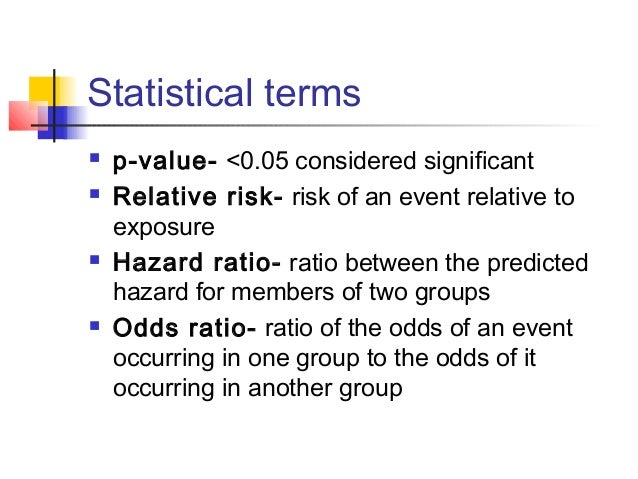

Publications report those three, also their adjusted values, then what.

When conducting a meta analysis, for the same disease and exposure, if. Risks, but they could be adjusted in multi-variable settings. As odds ratio and hazard ratio are the approximation to the relative. It compares the incidence or risk of an event among those with a specific exposure with those who were not exposed (eg, myocardial infarctions in those who smoke cigarettes compared with those who do not) ( Figure ). When there is not sufficient information about the profile of the between-group difference at the design stage of the study, we encourage practitioners to consider a prespecified, clinically meaningful, model-free measure for quantifying the difference and to use robust estimation procedures to draw primary inferences.Relative risk is a ratio of probabilities. The data from three recent cancer clinical trials, which reflect a variety of scenarios, are used throughout to illustrate our discussions. In this article, we summarize several critical concerns regarding this conventional practice and discuss various well-known alternatives for quantifying the underlying differences between groups with respect to a time-to-event end point.

Although this issue has been studied extensively and various alternatives to the hazard ratio estimator have been discussed in the statistical literature, such crucial information does not seem to have reached the broader community of health science researchers. However, the clinical meaning of such a ratio estimate is difficult, if not impossible, to interpret when the underlying proportional hazards assumption is violated (ie, the hazard ratio is not constant over time). When this assumption is plausible, such a ratio estimate may capture the relative difference between two survival curves. The hazard ratio estimate is routinely used to empirically quantify the between-group difference under the assumption that the ratio of the two hazard functions is approximately constant over time. In a longitudinal clinical study to compare two groups, the primary end point is often the time to a specific event (eg, disease progression, death).


 0 kommentar(er)
0 kommentar(er)
